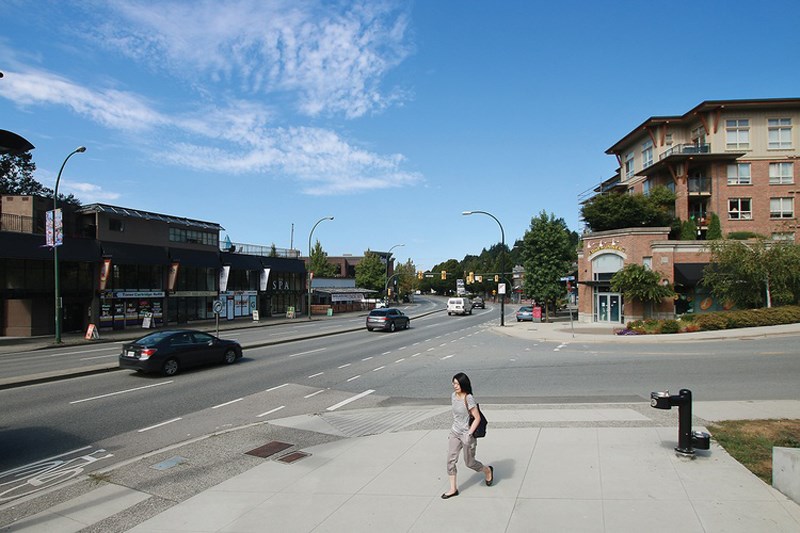The future seemed within sight when the District of North Vancouver adopted its new official community plan (OCP) in 2012 with a pledge to densify existing neighbourhoods and create several town and village centres. With its strategic position as both a key transportation corridor with a mix of uses, Marine Drive was framed as a gateway for those arriving off the Lions Gate Bridge.
“Marine Drive is redeveloping into a vibrant mixed-use corridor oriented to pedestrians and transit,” the OCP stated. “There are aging and vacant commercial properties in the area which create an opportunity for renewal.”
Those were selling points for Cathryn Coe, owner of Marine Drive Naturopathic Clinic, who purchased a 1,530-square-foot retail unit for her clinic at 1277 Marine Drive that spring. An apartment upstairs was part of the deal, a unit she saw as a potential income-producing property.
“The five-year plan was to really develop Marine Drive into a destination whereby someone would come for shopping and lunch and all sorts of services. I’ve been watching and waiting for that to happen,” she said.
With the arrival of new businesses, including a White Spot, the area is starting to come into its own as development potential in other areas of the North Shore max out.
“Marine Drive is the next area, really, to take off in terms of development because Lower Lons-dale is so saturated,” she said.
Tangible proof of the shift came earlier this summer, when Coe sold the apartment she owned in the building in just 10 days. The price was 25% above the list price two years ago, when the unit sat six months without a taker.
The phenomenon doesn’t surprise Matt Thomas, a vice-president with Avison Young in Vancouver. Prices for commercial properties in the corridor have taken off in the past six months, Thomas said, as investors leap on opportunities in the Marine Drive corridor no longer available elsewhere.
“Developers have basically snapped up everything available in the Lower Lonsdale and Moodyville area. The next best spot would be Marine Drive,” he said. “There’s been a lot of sales. These aren’t huge properties, but there’s a lot of them and there is some development potential, some assembly potential, with a lot of them.”
The area has long been of interest, but the shift in sale prices underscores the demand Coe saw when she sold her solitary residential unit. Redevelopment may not be in the offing just yet, but buyer demand highlights where the future lies.
Taylor’s Crossing at 1025 Marine Drive is a prime example. Built in 2001, the project received special zoning to accommodate uses that included an Indigo bookstore and craft brewery. Part of the vanguard of a commercial renaissance now firmly in place, the project helped spur the district to build on its success to mandate greater density on surrounding properties, through the 2012 OCP.
“You wouldn’t build what’s on Taylor’s Crossing today because you’d be leaving a lot of density on the table,” Thomas explained.
While the development is nowhere near the end of its useful life, it sold this summer for $24 million, or about $455 per land foot (about $260 per buildable square foot).
To the east, within North Vancouver city, property at 991 and 999 Marine Drive sold for $472 per land foot. The owner now controls the entire block, opening the door to a potential redevelopment play.
But the biggest deal to date occurred in May, when a private investor paid $4.1 million for 1293-1297 Marine Drive at the corner of Bridgman Avenue – the equivalent of $522 per land foot.
“Now that we’re seeing higher numbers being achieved in Lower Lonsdale and other areas like Edgemont and those different neighbourhoods, they’re saying … ‘Let’s just get some good property in a good location,’” Thomas said. “Developers are saying, ‘OK, even if I have to hold on to this and wait out the lease, you’re still going to be developing this in five years and there’s going to be a lot of money to make it make sense.’”
For more stories from Business In Vancouver visit biv.com.



